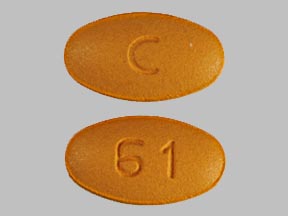
Cefpodoxime Coupons & Savings Card – Discount Prices from $24.18
My prescription
Edit
100MG, Cefpodoxime (14 Tablets)
Select pharmacy

CVS
$24.80
COUPON PRICE
Walmart
$24.18
COUPON PRICE
Albertsons
$27.46
COUPON PRICE
Walgreens
$28.60
COUPON PRICECefpodoxime savings card
Show this card to your pharmacist
Walmart
$24.18
BIN
ID
PCN
GRP
019876
LHE75C3727
CHIPPO
LHX
Powered by
Related cephalosporin antibiotics prescriptions
More prescriptions for urinary tract infection
Related cephalosporin antibiotics prescriptions
More prescriptions for urinary tract infection
Cefpodoxime dosage forms
Dosage Quantity Price from Per unit 100MG 14 Tablets $24.18 $1.73 100MG 10 Tablets $17.99 $1.80 100MG 20 Tablets $27.72 $1.39 100MG 100 Tablets $66.60 $0.67 200MG 2 Tablets $6.92 $3.46 200MG 20 Tablets $34.56 $1.73 200MG 100 Tablets $100.80 $1.01
| Dosage | Quantity | Price from | Per unit |
|---|---|---|---|
| 100MG | 14 Tablets | $24.18 | $1.73 |
| 100MG | 10 Tablets | $17.99 | $1.80 |
| 100MG | 20 Tablets | $27.72 | $1.39 |
| 100MG | 100 Tablets | $66.60 | $0.67 |
| 200MG | 2 Tablets | $6.92 | $3.46 |
| 200MG | 20 Tablets | $34.56 | $1.73 |
| 200MG | 100 Tablets | $100.80 | $1.01 |
Cefpodoxime Warnings
The safety and warning information provided below highlights crucial considerations regarding the use of this medication. It is essential to understand these details and discuss any questions or concerns with your healthcare provider.
Severe Allergic Reactions: There is a risk of serious allergic reactions to cefpodoxime, which can be life-threatening, such as facial swelling, shock, and anaphylaxis (e.g., throat closure). If you have a known allergy to antibiotics, particularly penicillin or other cephalosporin antibiotics, inform your healthcare provider, as you may have an increased risk of an allergic reaction. Seek immediate medical help if you experience symptoms like hives, rash, red skin, swelling of lips or tongue, or difficulty breathing after taking cefpodoxime.
Clostridioides difficile Infection: Usage of antibiotics like cefpodoxime can disrupt the balance of bacteria in your stomach and intestines, increasing the chance of infection by Clostridioides difficile (C. diff). This overgrowth can lead to severe diarrhea.
Development of Drug-resistant Bacteria: It is crucial to follow the prescribed dosage and duration for cefpodoxime. Deviating from the prescription, such as taking it for shorter or longer periods or for unapproved conditions, can increase the risk of developing drug-resistant bacterial infections. These infections can be severe, life-threatening, and challenging to treat.
Contraindications: This medication should not be used in individuals with a severe allergy to beta-lactam antibiotics, such as penicillin and cephalexin (Keflex), due to the potential for serious health risks. Ensure you consult your healthcare provider if this applies to you.
Cefpodoxime Side Effects
Common side effects:
- Diarrhea
- Nausea
- Vomiting
- Headache
- Diaper rash
- Fungal skin rash
Less common but important to monitor:
- Stomach pain
- Skin rash
- Vaginal yeast infections
- Oral thrush
- New vaginal yeast infection
Serious side effects:
- Non-stop nausea or vomiting
- Swelling of the ankles or feet
- Unusual tiredness
- Fast or pounding heartbeat
- Difficulty breathing
- New or persistent signs of infection
- Dark urine
- Yellowing of the eyes or skin
- Changes in urine output
- Severe intestinal condition caused by C. difficile
- Persistent diarrhea with blood or mucus
- Serious allergic reactions including rash, swelling of the face, tongue, or throat, severe dizziness, and trouble breathing
Cefpodoxime Interactions
Interactions with moderate risk that may require dose adjustment, closer monitoring, or timing changes:
- Cimetidine
- Famotidine
- Nizatidine
- Probenecid
- Ranitidine
